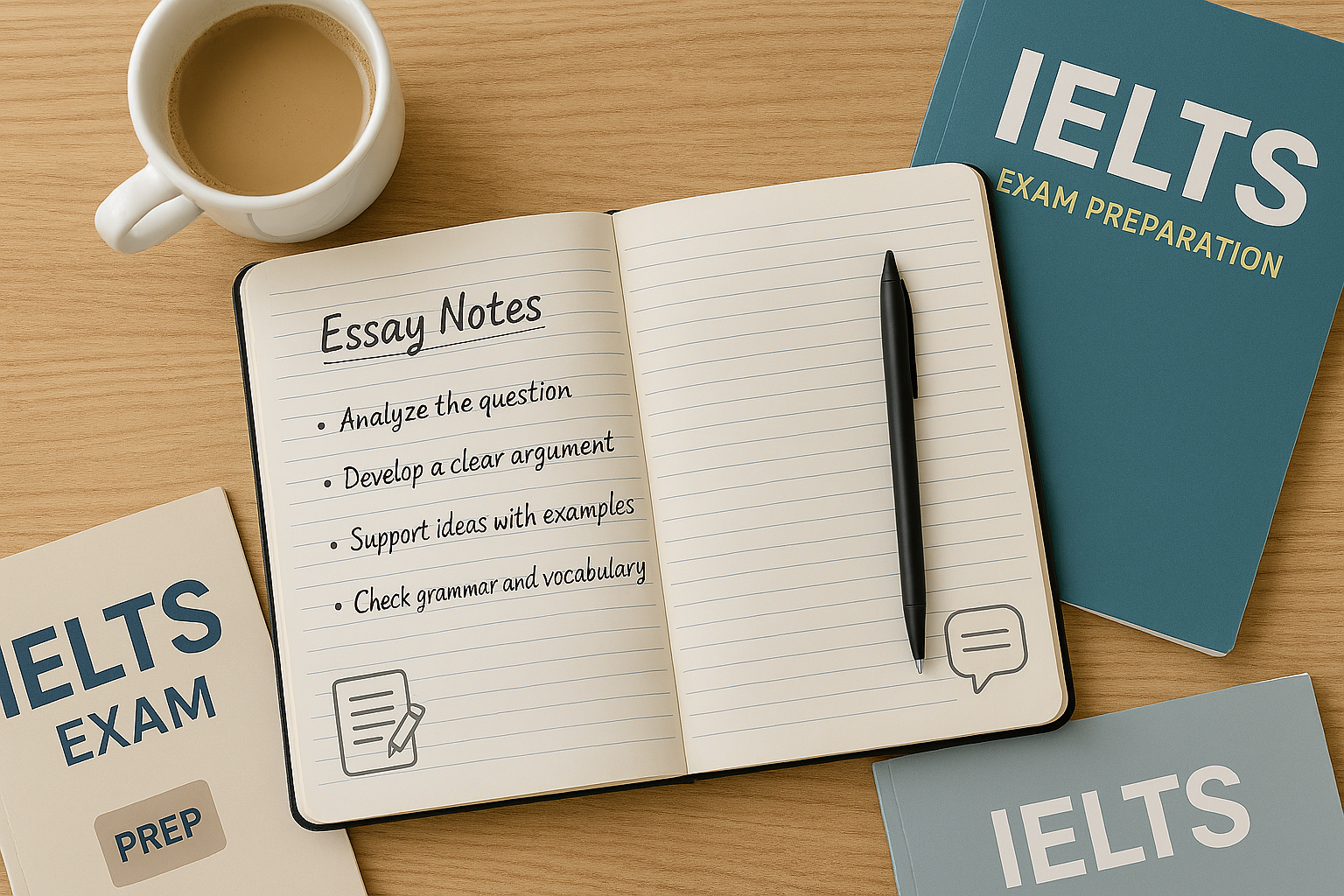When preparing for the IELTS exam, most candidates focus heavily on Reading, Listening, and IELTS Writing Task 2, but the Speaking test often creates anxiety. Among its three parts, Part 2—the IELTS Cue Card task—is one of the most challenging and important. It requires you to speak fluently for two minutes on a given topic. Many students struggle because they do not understand how to use the cue card effectively.
In this article, we will explain what an IELTS cue card is, why it matters, and how you can practice with it to boost your Speaking score.
What Is an IELTS Cue Card?
An IELTS cue card is a small card given to candidates during Part 2 of the IELTS Speaking test. It contains:
-
A topic you need to talk about
-
Three to four bullet points suggesting ideas to include
-
A note to add your own ideas
For example:
Describe a memorable journey you had. You should say:
-
Where you went
-
How you traveled
-
What you saw on the way
-
And explain why this journey was memorable
You get one minute to prepare your ideas and two minutes to speak continuously. The examiner will not interrupt unless you finish before time.
Why Is the Cue Card Important in IELTS Speaking?
The cue card task measures:
-
Fluency and Coherence: Can you speak naturally and organize ideas logically?
-
Lexical Resource: Do you use varied vocabulary, not just basic words?
-
Grammatical Range and Accuracy: Are your sentences structured well?
-
Pronunciation: Do you sound clear and understandable?
This part is crucial because it carries significant weight in your overall Speaking score. With the right strategy, you can impress the examiner in just two minutes.
How to Use an IELTS Cue Card for Effective Practice
1. Analyze the Topic Quickly
The first step is to read the topic carefully. Identify what the main theme is (e.g., a person, event, place, or object). Look at the bullet points as a guide to structure your response.
2. Make Quick Notes in the 1-Minute Prep Time
You are allowed to make notes during the preparation minute. Use this wisely:
-
Write keywords, not sentences
-
Note down ideas in the order of bullet points
-
Add extra personal details for richness
For example:
Topic: Describe a movie you recently watched
Notes:
-
Movie: Inception
-
Last month – at home
-
Reason: love sci-fi
-
Felt amazed – story + effects
3. Speak for the Full Two Minutes
Stopping too early may signal poor fluency. To avoid running out of ideas:
-
Add background details
-
Share your feelings and opinions
-
Use examples
For example: instead of saying “I went to Goa with friends,” say:
“Last year, I visited Goa with a group of college friends during the summer holidays. It was our first trip together, and we planned everything ourselves, which made it even more special.”
4. Organize Your Answer
A clear structure helps the examiner follow your response:
-
Introduction: Briefly introduce the topic
-
Main Content: Cover bullet points in order
-
Conclusion: Add a personal opinion or future plan
5. Use Linking Words for Coherence
Connect your ideas smoothly with phrases like:
-
Firstly, Secondly, Moreover, In addition
-
On the other hand, However
-
Finally, To sum up
Example:
“Firstly, the journey was exciting because it was unexpected. Moreover, I enjoyed the scenic views on the way…”
6. Expand Your Vocabulary and Grammar
To score high, avoid repetitive phrases. Use:
-
Adjectives: fascinating, thrilling, unforgettable
-
Complex sentences:
“Although the weather was unpredictable, the experience was worth it.”
How Cue Card Practice Improves Speaking Skills
Practicing with cue cards does more than prepare you for the IELTS Speaking test:
-
Boosts Confidence: Helps you get comfortable speaking on random topics
-
Improves Idea Generation: Teaches you to think quickly
-
Develops Vocabulary: Every topic introduces new words and phrases
-
Enhances Fluency: Two-minute speaking practice reduces hesitation
Connect Cue Card Practice with IELTS Writing
Interestingly, using cue cards can also improve your IELTS Writing Task 2 performance. Both require logical idea organization and topic development. For example, if you practice cue cards on topics like education, technology, or health, you’ll have ready ideas for writing essays on similar themes.
Common IELTS Cue Card Topics for Practice
-
A memorable trip
-
Your favorite hobby
-
A book or movie you enjoyed
-
A person who inspires you
-
An important decision you made
Collect 20–30 cue cards and practice daily. Record your responses, listen for mistakes, and improve.
How Cue Cards Can Help Improve Overall Speaking Skills
Practicing with cue cards does more than prepare you for the IELTS test:
-
Builds confidence – Speaking on random topics improves your ability to think quickly.
-
Enhances vocabulary – You learn new words while preparing different topics.
-
Improves fluency – Speaking for two minutes without breaks trains your brain to form ideas faster.
The IELTS cue card section may seem intimidating, but with consistent practice, you can master it. Focus on organization, vocabulary, fluency, and pronunciation, and always aim to speak for the full two minutes. Regular practice will not only help you ace the Speaking test but also develop your skills for IELTS Writing Task 2 and other sections. So, grab some cue cards today and start practicing like a pro!
